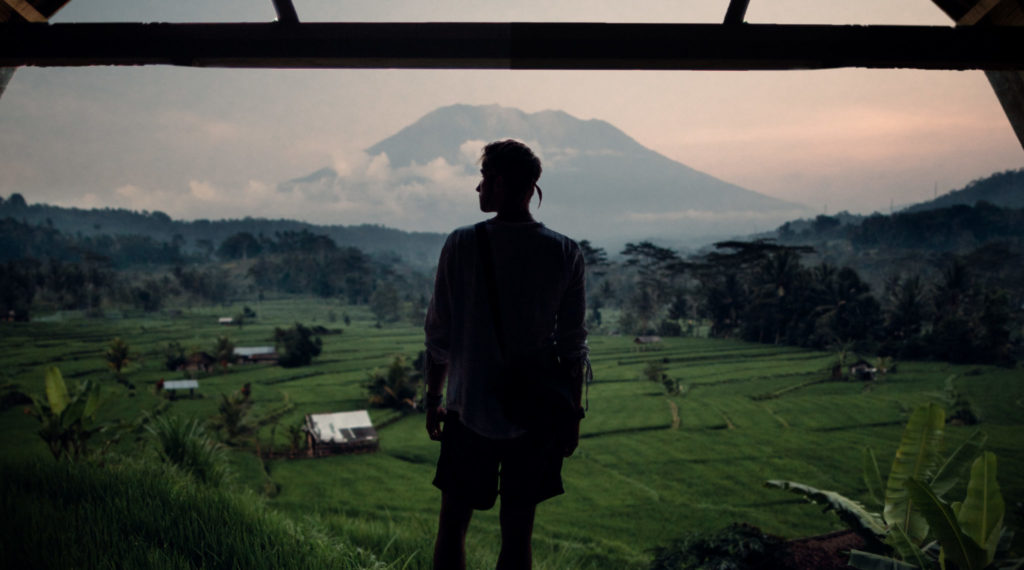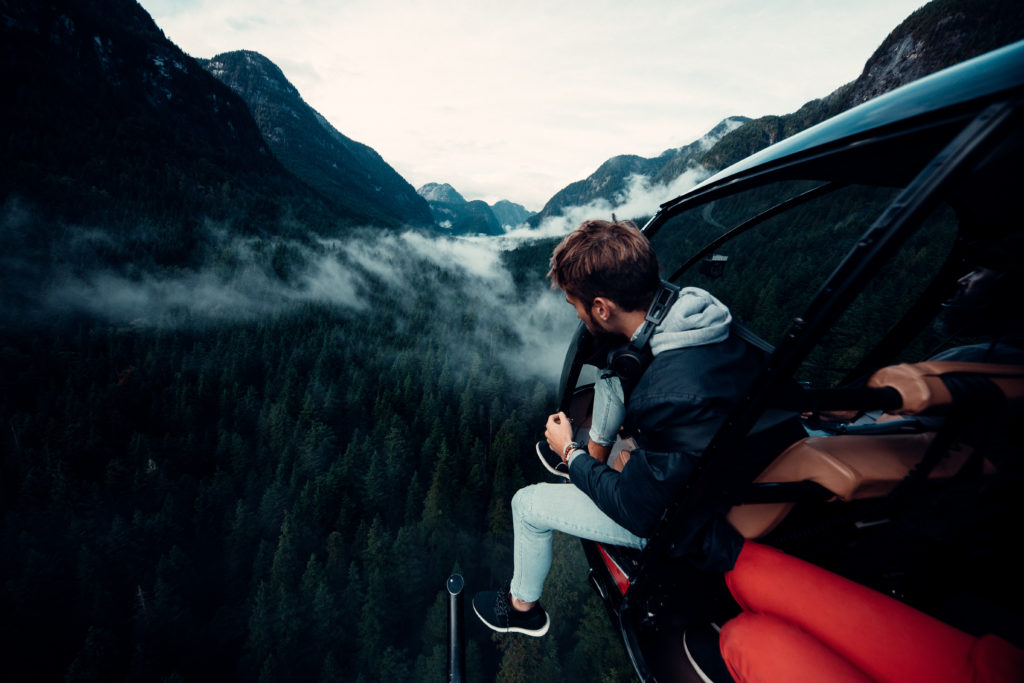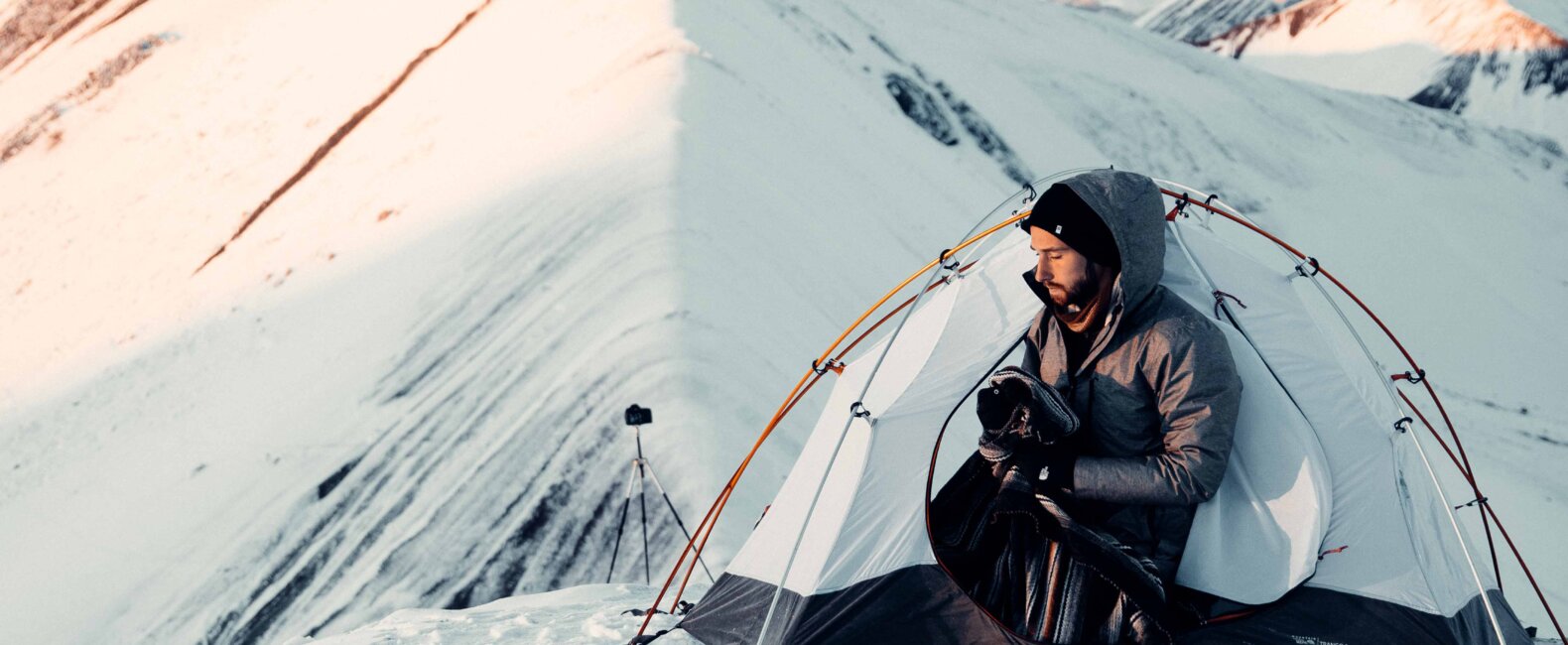Sometimes it pays to work in the trenches and do the DIY grind. You not only get the same experience as the film school folks, but you also get the personal experience of making it on your own. Building your own empire. Making your own mistakes. And then, one day, after this long and harrowing process, The Chainsmokers give you a call to shoot their newest video.
Ok, maybe the end of this story only relates to Sam Kolder, but the first part remains true. Either way, Sam’s a content creator who’s forged his own path and survived trial by fire, and the results have been worth the effort. He’s become renowned for his incredibly tight, wizard-esque editing style and globetrotting lifestyle videos, and now he’s opening up his experiences and expertise through a brand-new masterclass on his site. It covers everything from the business aspect of building your creative business to putting a polish in your videos in AfterEffects or PremierePro. If you’re a content creator, it’s worth your while and you can sign up right here.
But, behind the talent and technique, there’s also the story of how he got to this place, which is equally valuable. In our conversation, Sam walks us through the risks and tragedies that brought him to where he is today—and what continues to inspire him.
Here’s filmmaker Sam Kolder.
Musicbed: What are your first filmmaking memories?
Sam Kolder: The first time I ever used a camera to film something was at camp when I was probably eight or nine years old. My brother had gotten this little point and shoot camera and you were able to cut parts of clips out. We were able to do this effect where you walk behind something in the room, like somewhere far in the distance, and then you quickly go over to something else, and you walk out from behind that object. It looks like you’re teleporting from one end of the room to the other.
Ever since that moment, film just really intrigued me. How we’re able to manipulate moments in time, visually, in a variety of different ways. That’s where things started. I made a couple short films with my friends, just messing around and filming little action scenes. It was a lot different than what I’m doing now, but it was really about having fun with the camera, experimenting, and learning. Every week my brother, me and my friends, we would shoot a little short film or something. If I look back at it now, it makes me cringe. But it was a lot of fun back in the day.
How did you take next steps towards what you’re making now?
Throughout high school I didn’t really know if this was just a hobby or if it was something that could potentially become my full-time career. My parents really wanted me to pursue something steady, like taking over my dad’s business. We would renovate apartments that people have lived in for really long periods of time and it was really intense work. That’s what I was doing throughout high school.
I was better at math in school, so we thought it would be smart for me to be an accountant or something. And my life trajectory was going in that direction, honestly. I wasn’t really much of a rebellious kid. I listened to my parents. But then, my brother passed away. That was a hard slap in the face for me. It was really something that forced me to take a step back and just view my whole life from a whole different perspective.
I realized it would be the biggest mistake of my life to pursue something that doesn’t actually bring me joy and doesn’t actually motivate me to get out of bed in the morning. At that moment, I said, “All right. Life’s too short. I’m just going to pursue what I love to do, full-throttle. And that is filmmaking.”
I started to mess around with a bunch of different programs online, using this one program called Twixtor that basically allowed me to slow down footage and make it feel like it’s like a thousand frames per second. It creates these artificial frames. I was one of the first filmmakers to do that with the GoPro. That was the first time that I kind of started to get some traction. I was doing something different, something that people hadn’t done before. It was exciting to me.
From that point, I just stuck to filmmaking. I’d experiment with my editing a lot and learn new things online. And then eventually The Chainsmokers’ manager hit me up because he saw this one video that I made of a trip to Europe. He asked me if I’d be interested in touring with them for a week in the States. This was crazy for me because The Chainsmokers were my favorite artists since I was maybe 10 or 11 years old. It was a tough step for me to just follow my intuition and go down the path of what I really wanted to do.

And that choice set off your career path.
It went really well. From that point, I started to work with them more and more. More filmmakers were seeing my work through their social channels. I was always trying to do something different, something new and cool with each video. I started to grow my following and things started to snowball.
After about a year of working with The Chainsmokers, I decided that I needed to slow it down. I started working with Beautiful Destinations. It was super fun. It allowed me to travel the world, meet a lot of cool people, understand how to pitch to brands, and how the industry works—and of course, capture amazing content all around the world. Eventually, I got to a point where I felt like I needed to really focus on my own work and not necessarily work for someone else. I needed to focus my energy and time into creating my own art.
I was scared at the time. It wasn’t an easy decision. But I just really felt like I needed to pursue my own projects, and dive into the projects that make me come alive. All of these decisions that I made along the way were really important to getting me to the place where I am now.
There seems to be a thread of doing things on your own. Did you ever consider a more traditional path, like film school?
I actually applied to Ryerson University in Toronto for their film program, mainly because my parents wanted me to go to school. They were in this mindset that school is the most important thing that you can do, otherwise you’re just going to stray. After my brother passed away, I remember thinking, “The only thing I can go to school for is the thing I’m passionate about, which is film.” So, I applied and I didn’t get accepted. Looking back, it’s good. I’m very happy I didn’t get accepted.

Doing it all on your own seemed to become its own film school.
Yeah. I think doing everything myself, seeing all the different sides to production, experiencing them hands on, has helped me be a better creator. I’m able to understand how each area of film works, whether it’s sound design or shot selection or editing or pacing within a timeline. Knowing all the different areas of content creation allows me to fine tune each one of those areas to work the best way I can.
As soon as I went freelance, I started to work with a lot of major brands. I needed to understand how to maintain these relationships with these brands and how to sell myself and how to sell my work in a way that gets the budgets that make sense from a business standpoint. The route of freelance really kept me on my toes because I wasn’t working for anybody. There’s no promise of payment at the end of the month. You’re on your own.
Do you think being a content creator is more difficult than it used to be?
It’s definitely more difficult nowadays, simply because this field is very saturated. When I was starting on social media, I was uploading videos back when Instagram had a 15-second limit. I remember getting the idea to create a video in a four-by-five aspect ratio because I’ve never seen anyone do that. Everyone was posting a video sideways, and you’d have to flip your phone. There were fewer creators. There is a lot more competition.
But that’s what I’ve always preached: The most important thing you can do as a creative is to focus on contributing something different, on standing out, whether that’s through different style of editing or color grade. Differentiating yourself from the masses is going to do a lot of good for you as a creative and as a business.
What was the moment you found your own contribution?
After I finished high school, my friends and I decided to take a trip to Hawaii. I spent all my savings on this trip. And we shot basically a two or three minute video of our adventure. That was the first project that I sat down and said, “Okay, I really want to do something different with this.” And I did. I managed to come up with a bunch of cool transitions.
At first, I didn’t get much traction, but then after about six months to a year, I started to pick up more, and then I started to get a lot more attention. That period was the first time where I was doing something different and it was working. But, my style is completely different now than what it was back then. And that’s what I like about art, always trying to do something a little bit different. I try to add a little bit more to keep it fresh.
What inspires you these days?
To me, inspiration comes from life experience. It’s when I go out and immerse myself in the real world that ideas are born. And what I love in this craft of creating videos is that you can convey emotion so well. Relationships, heartache, curiosity, learning new things, failing, succeeding — they are all experiences that create emotion and are the driving force for creating meaningful art.
I also like to watch movies and TV shows from Directors I look up to like Sam Levinson and Wes Anderson who really inspire me to always step my game up. I recently watched HBO’s Euphoria and it took me on an emotional roller coaster. It made me empathize for each character so deeply—it felt like I was there and I could relate to each character. I cried, I laughed. It was so beautiful and honestly transformative for me. It reminded me how powerful this art form is and how it’s such a beautiful way to get a message across to other human beings.
Sign up for Sam’s Masterclass here, or read our definitive guide to YouTube success.

















































































